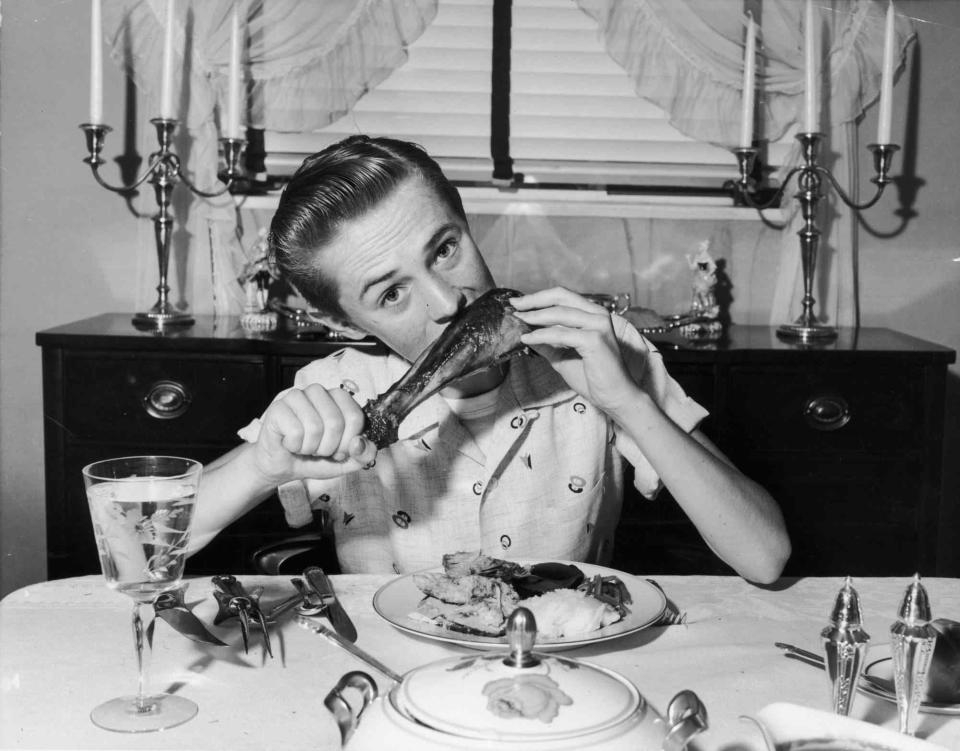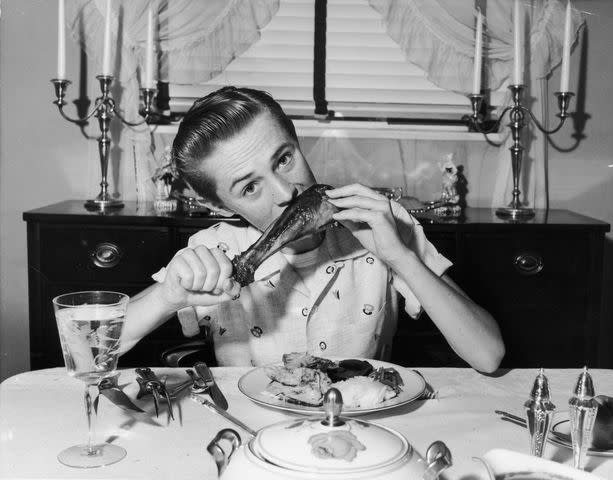Everything You Need To Know About Why It's Rude To Eat With Your Elbows on the Table, According to Experts
- Oops!Something went wrong.Please try again later.
Other than "because I said so!"

"Elbows off the table!" is still ringing in our ears even decades out from under your parent's or grandparent's roof. Not that we'd expect this favorite mealtime reminder (after chewing with your mouth closed, of course) ever to leave us.
Keeping your elbows off the table during meals is one of the most arbitrary etiquette rules out there, and yet, it's one of the earliest taught to little eaters. So why, of all the offensive acts one could commit while dining, is it so forcefully policed? Like most etiquette rules, mealtime elbow placement is a holdover from a bygone era.

For expertise on this rule, Margaret Visser, the historian, writer, and broadcaster, shares her insights about everyday life, including table etiquette, in her book The Rituals of Dinner: The Origins, Evolution, Eccentricities, and Meaning of Table Manners. Her books are bestsellers, award-winners, and translated into many languages.
Margaret Visser is a historian, writer, broadcaster, and the author of The Rituals of Dinner: The Origins, Evolution, Eccentricities, and Meaning of Table Manners. Her bestselling, award-winning books are translated into many languages.
Emily Post was an author and socialite who shared many of the etiquette rules that we still live by today. The Emily Post Institute continues to carry that tradition by teaching proper etiquette to people of all ages.
Another expert on this matter, Emily Post, was an author, socialite, and legendary for sharing etiquette rules that we still live by today. Today, the Emily Post Institute carries on that tradition by teaching and promoting considerable etiquette to people of all ages.
Dining Table Etiquette
Why Did We Start Keeping Elbows off the Table?
For earlier civilizations, it was a way to prevent outbreaks of violence at the table. "Table manners prevented us from leaving our space and starting a fight. It was important that people saw you as considerate or trying hard," Margaret Visser explained to Reader's Digest.
What Is a Reason This Etiquette Was Popular?
In the olden days, crossing that invisible border could be interpreted as disregarding order when social norms were the only thing keeping people in line. People like that were dangerous and capable of anything. "People got scared when you started having bad manners," Visser continued. "They realized the taboo was not functioning, and you didn't know what this person was going to do next."
Are There Any Additional Reasons?
In most situations, it is a considerate thing to do. Showing respect for the other people you share a table with starts with not crossing any boundaries. It is an act of good faith that you appreciate the opportunity to share a meal and be treated with the same respect you give others.
How Does This Technique Help Dining Accommodations?
Think of it this way. The fork and knife, situated on either side of a place setting, already act as an imaginary boundary for each person's space at the table. Today, while it's unlikely to interpret elbows on a table as a threat, putting them on the table is inconsiderate. Whether you realize it or not, your elbows are likely encroaching on those around you.
Is it ever acceptable to have your elbows on a dinner table?
In a casual, familiar setting, it's acceptable to do it every once in a while. Etiquette queen Emily Post is known for happily eating with her elbows on the table from time to time. "It really makes no difference," she famously said.
For more Southern Living news, make sure to sign up for our newsletter!
Read the original article on Southern Living.

